The Agile Mindset: Being Agile
Agile Mindset
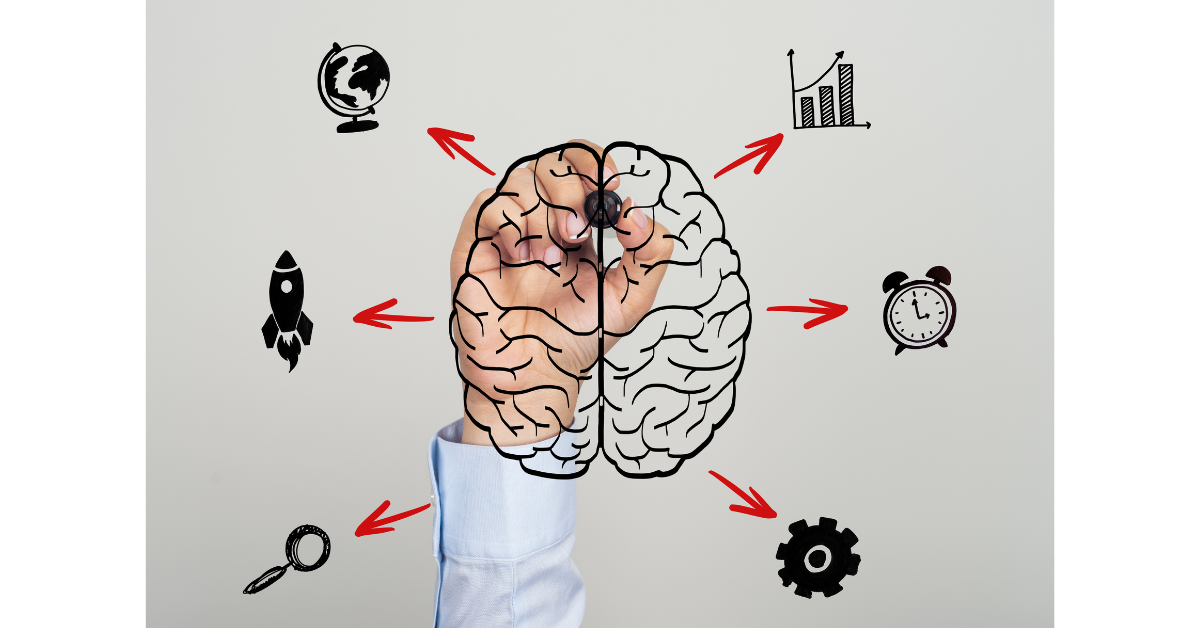
Agile, Scrum, Kanban & SAFe … just some of the latest buzzwords that seem to have seeped through all branches in recent years. While some think these terms denote a short-lived fashionable trend, some others believe they refer to our future way of working. What makes Agile so special that it may shape the way people work together independently on the type of industry?
In an earlier blog article, we looked at the Why of Agility: Agility enables us to keep the focus on (customer) value while navigating our VUCA world. Now we dive in deeper into what Agility actually is.
The answer is simple and yet needs time to sink in: Agile isn’t merely a methodology – it’s a mindset with respect to self- and people management.
While a methodology is a way of doing things in a systematic way, our mindset is a set of assumptions, beliefs and attitudes towards oneself, others and the world. Our mindset itself is rooted in our values. In other words, what we value shapes our beliefs and our worldview.
– Differentiating between methodology, mindset and values
SAFe, the Scaled Agile Framework, combines the values of Lean Manufacturing, which are nicely visualised by the House of Lean, with the values & principles of the Agile Manifesto to arrive at the “Lean-Agile Mindset”. While this resulting mindset is a useful guidance, it is more a collection of principles than values. That’s why we would like to take a step back at this point and boil down the core values & attitudes of an Agile Mindset. In other words, which values & attitudes are pre-conditions for managing oneself, work and people in a way that value is optimised for everybody involved?
The following is a comprehensive list of values & attitudes that comprise the Agile mindset (as opposed to the values of traditional waterfall management)[1]:
- Self-Organisation & Participation (as opposed to top-down management): The agile mind/organisation accepts and appreciates that any complex system (such as our brains or social systems, like organisations) are self-organised by nature. This means that anyone who has a relevant contribution to make is invited to do so (participation). Further, the people who do the work decide on how they do it.
- Systems thinking (as opposed to perceiving parts of the system as independent from each other): The Agile mind acknowledges that all parts of a system are interconnected in a non-linear (“complex”) way. Therefore, applying a holistic/ systemic view on whatever situation/ system we are facing, is crucial for navigating our complex world. This means, for example, that optimizing a component of the system does not necessarily optimize the whole system[2].
- Courage (as opposed to hiding behind management decisions, fixed project plans and avoiding risks): The agile mind/organisation values experimentation to keep improving, which includes: Incremental planning & building – inspect – learn – adapt. This also involves an open mind to risk taking and making mistakes. Continuous learning by means of (self-) reflection (“reflexion”) takes the courage to be vulnerable.
- Respect & Trust (as opposed to respect for status & distrusting employees): The agile mind/organisation trusts co-workers & employees to be capable of doing their work well, given the right facilitation, and respects them as fellow human beings of equal value, irrespective of any differences. Diversity – also with respect to in knowledge & skills – is embraced. Nonviolent communication & constructive feedback is essential for mutual respect.
- Openness & Transparency (as opposed to secrecy & hiding mistakes): The agile mind/organisation values open & transparent communication with regards to the work, its challenges and fall-backs – both within the organisation, but also towards the customers/ stakeholders. Only on this basis true insight can be gained and improved upon.
- Focus (as opposed to following a fixed project plan and unnecessary meetings): The agile mind/organisation focusses – above all – on customer & employee satisfaction and the alignment between the organisation’s individuals and its vision. At any moment, the agile mind/organisation optimises spending (time) resources with respect to whether it increases the value for the customer or employee satisfaction. The latter is important, because only satisfied & aligned employees are likely to be healthier, and to be autonomously motivated, which, in turn, increases their loyalty to the company and its vision.
- Commitment & Psychological ownership (as opposed to fixed accountabilities according to a job description): The agile mind/organisation values sticking to commitments made and clear communication shall a change occur which threatens the commitment. This involves a strong sense of responsibility – owning one’s commitments. Autonomously motivated employees are more likely to commit to and own the goals of the organisation.
- Ambiguity tolerance (as opposed to perceiving the world in absolutes): There are certainly indisputable facts about the physical and the social world. However, the Agile mind/organisation accepts that our perception of these facts and their relevance depend on the situation and context.
- Relentless Improvement – Growth Mindset (as opposed to Fixed Mindset): The Agile mind/ organisation is curious and open to continuously grow, learn and improve personally and professionally. Failure is not taken personal or resented, but understood as an opportunity to learn. “Be better than yesterday” – our motto – does not mean to imply “Today you are not good enough”, but rather “We are all on a continuous growing path together.”
- Sustainability (as opposed to exploitation): An Agile mind/ organisation takes responsibility for their actions. This implies understanding the impact of their products and services on their customers and the environment as well as understanding that a healthy organisational culture and sustainable working pace is vital for the well-being of employees. An Agile organisation applies system thinking to sustainability (“circular economy”) and relentlessly optimizes their impact.
- Emotional & Social intelligence (as opposed to mere cognitive intelligence): Social & emotional intelligence are paramount in navigating the complexities of human interactions. They empower individuals to understand and manage their own emotions, fostering self-awareness and resilience. Additionally, these intelligences enable effective communication, empathy, and adaptability in social contexts. This leads to healthier relationships, improved conflict resolution, and the ability to positively influence others. Ultimately, honing these skills not only enhances personal well-being but also fosters a harmonious and productive organisation/ society.

These values & attitudes are the essence of an Agile Mindset that underpins an Agile culture. While most people seem to think that Agile is solely an umbrella term for value delivery frameworks based on agile values, such as Scrum or Kanban, Agile actually is that set of values. What makes it so difficult to wrap our minds around the difference between Agile and traditional management is that the Agile Mindset actually requires a paradigm shift from the classical logic underpinning top-down management to a logic that fosters self-organisation and trust. In other words, Agile is not just about plugging in a different method, but actually transforming the underlying logic. Living this logic is “being” Agile and will result in “doing” Agile on individual level, since every decision we make is based on our values (and cultural norms).
If managers facilitate this (or at the very least do not hinder this), an Agile culture emerges from the Agile mindset of individuals. While the importance of being Agile cannot be stressed enough, doing Agile may also be a good way to start; As we have learned from Synergetics, macro phenomena (e.g. team using Scrum as management framework) may influence micro phenomena (e.g. our individual mindsets) and thereby shape an Agile culture. Utilising an Agile methodology as catalyst to inspire the Agile Mindset, however, implies that we constantly need to remind ourselves that the framework is a means to an end and not the end itself:
An Agile framework is a Trojan horse that aims at introducing the Agile mindset to the company.
Based on an Agile Mindset, the afore-mentioned Agile Manifesto was developed in 2001, consisting of 12 principles and 4 so-called values, which we will dive in deeper in future blog articles. These principles may be interpreted as calls to action in an Agile context and the values refer to a comparison between what a traditional versus what an agile organisation places importance on. Personally, I find it a bit confusing that the developers of the Agile Manifesto denoted these as values, because values are really something that the mindset springs from (see above).
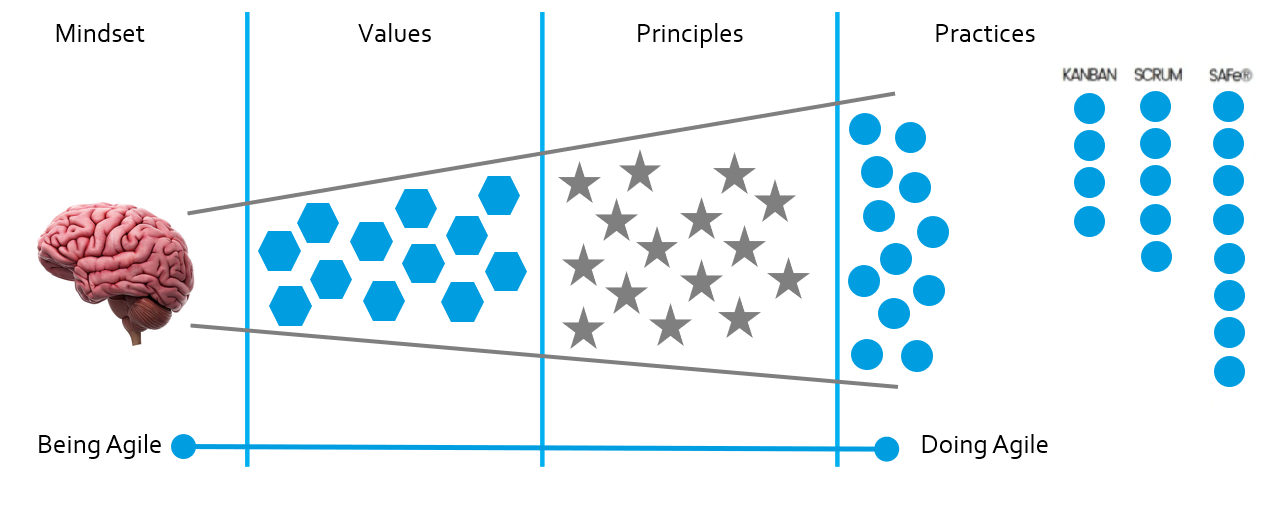
The Agile Leader: Facilitator & Servant Leader
Since Agility embraces self-organisation, the agile leader is less of a traditional manager and more of a facilitator & coach. A true Agile leader lives & leads by example and facilitates the Agile values. Facilitation and empowerment include asking the employees the right questions with respect to what they need to perform their work effectively. An Agile leader is a servant leader who enables participation and trusts their employees to get their job done. The servant leader empowers and gives guidance, enables synergies and supports removing impediments. (Look at the visuals)
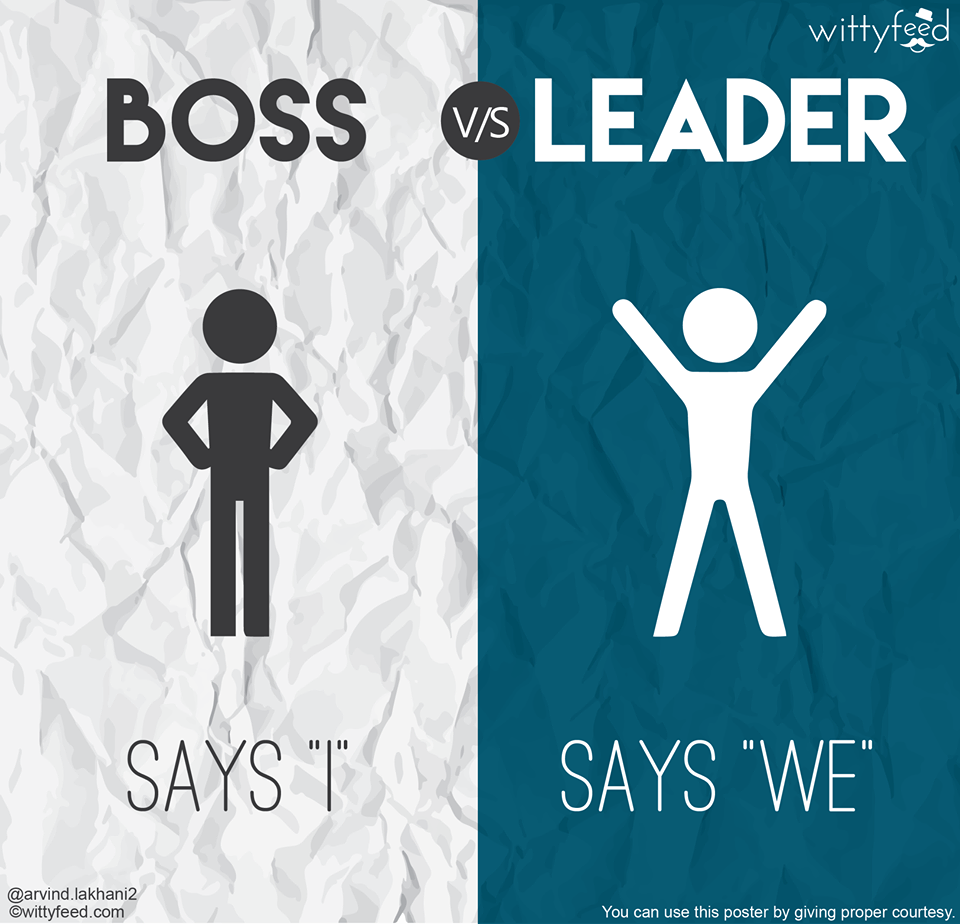 |  | 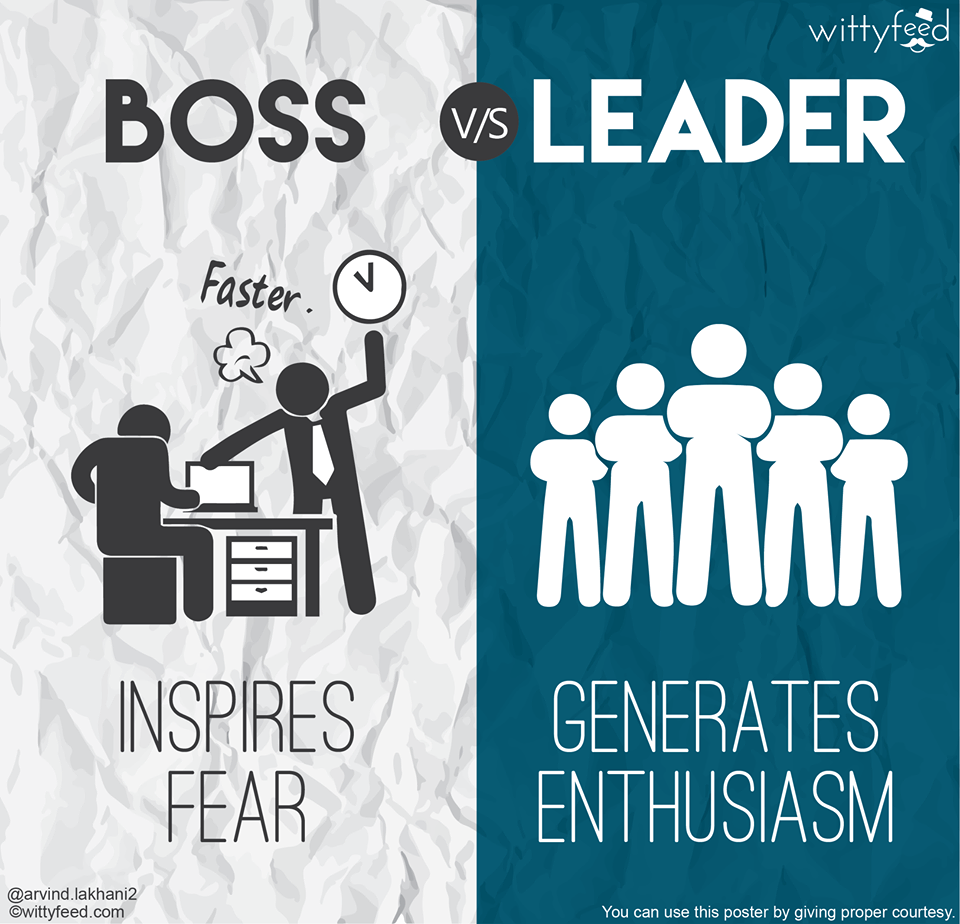 |
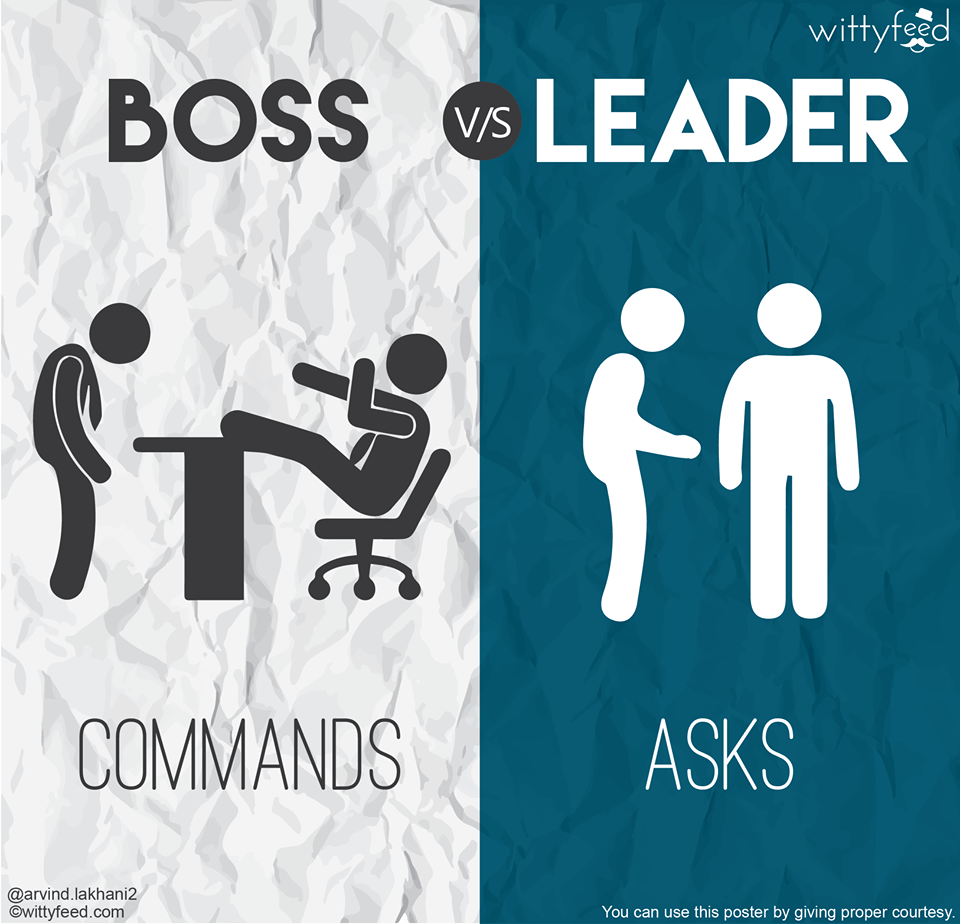 |  |  |
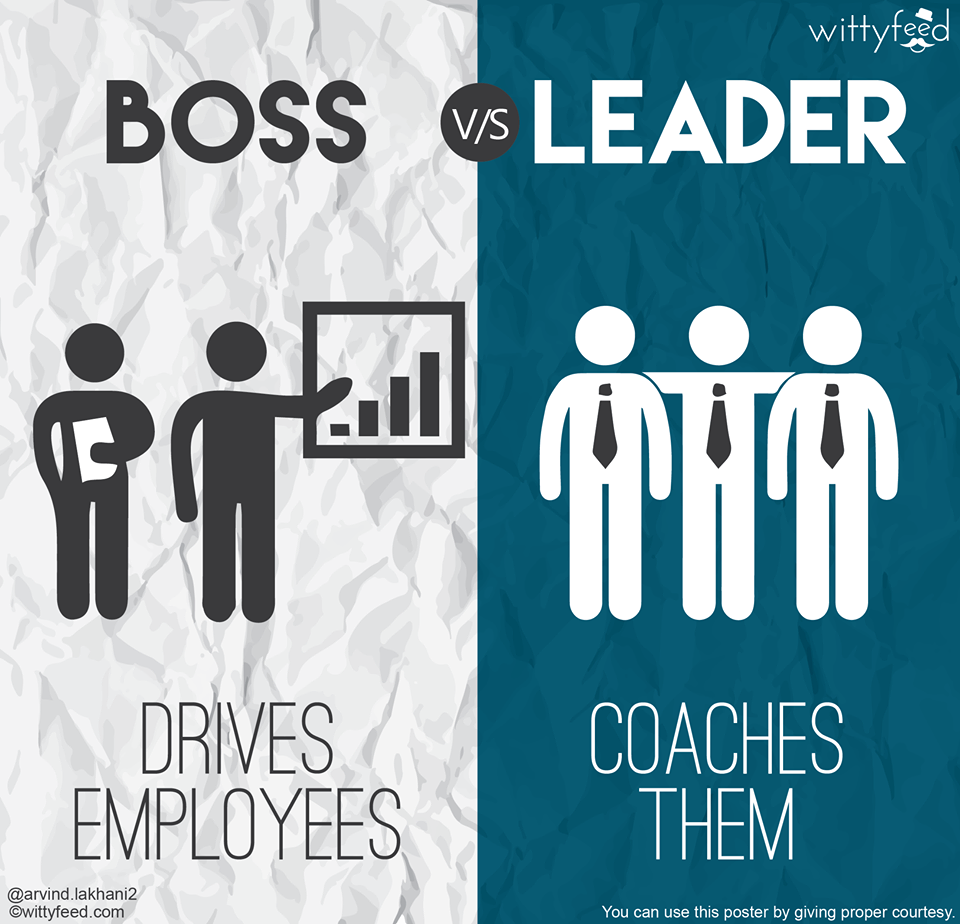 | ||
Conclusion
In summary, it seems that in today’s VUCA world knowledge workers may be more effective in producing value for the customer when they have the freedom to self-organise their work, together with the colleagues with whom they have dependencies. Agile methodologies, such as Scrum, are no rocket science; they are lightweight frameworks, applicable to a wide range of (work) contexts. Their essence does not so much lie in their rules but more in their values. Agile is a mindset, which continuously reminds as to place focus on customer value, employee motivation and inter-organisational alignment. There have been many case studies that Agile ways of working effectively increase the organisation’s revenue. While the likelihood is large that Agile will deliver results, such as increased revenue, customer & employee satisfaction, given the nature of our VUCA world, Agile cannot give any hard promises, nor blueprint solutions. However, the Agile mindset represents the most constructive & effective way we can go about organising ourselves together with other people to pursue common goals.
[1] This list is comprehensive, but may not be complete. It is based on literature on motivation, self-organisation, ambiguity tolerance & Laloux’ “Reinventing Organizations”. Moreover, most of the Agile core values are actually overlapping with the 5 Scrum values & 4 SAFe values, both of which are frameworks built on Agile values.
[2] A good example for applying a systemic view on a controversial topic is this science-based video on climate change.
This blog article is based on an article written for my personal & science blog.